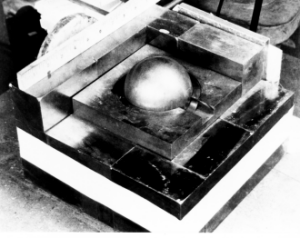Re: What "might happen" with the Japanese Nuclear plants?
None the less, such a glow was seen and recorded, along with the Neutron and gamma ray emissions.
They did that experiment at Los Alamos. It was called "Tickling the Dragon's Tail". Here is a photo of the test assembly:

I can imagine several scenarios where criticality under inadvertent containment can occur. But, my wife is calling and I have to go...
Originally posted by kubicle
The main reason I'm not easily convinced of a nuclear explosion is that it is actually rather hard to get fissile material to explode (just putting a critical mass together won't be enough). It takes a bit of engineering to prevent a critical mass to go sub-critical before there is enough energy released to *explode* (of course one would need to define what constitutes an explosion)

...but if we're talking about an explosion strong enough to destroy a building, I just can't think of a way that could happen in the conditions of the reactor (I don't see where the pressure would come to keep any kind of "containment" sealed long enough, for example) or with the fuel used in nuclear plants (it's not enriched enough).
There are also too many variables involved in the two explosions to call the differences visible in explosions definitive evidence of a nuclear explosion.
I'm not saying it's impossible, just that I haven't seen enough evidence to overthrow my skepticism.
Of course, any kind of explosion in a failed nuclear plant is something one does not really want to see (they are not that great on functioning nuclear plants either).
There are also too many variables involved in the two explosions to call the differences visible in explosions definitive evidence of a nuclear explosion.
I'm not saying it's impossible, just that I haven't seen enough evidence to overthrow my skepticism.
Of course, any kind of explosion in a failed nuclear plant is something one does not really want to see (they are not that great on functioning nuclear plants either).





Comment